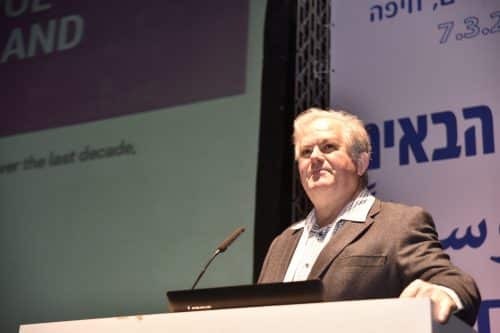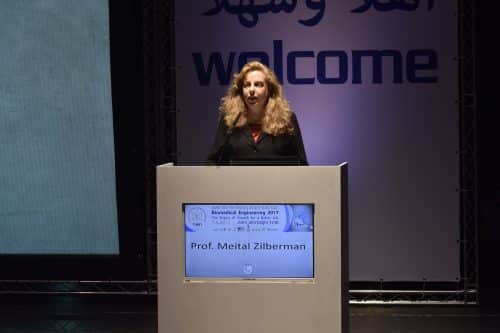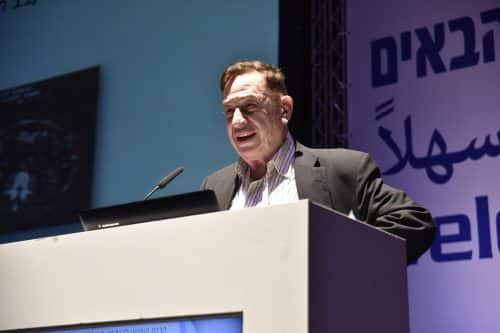Heart cells, imaging, medical robotics and tissue engineering at the annual biomedical engineering conference held in Haifa in collaboration with the Technion

At the beginning of March, the annual biomedical engineering conference was held in Haifa. This conference, organized by the Israeli Association for Medical and Biological Engineering (ISMBE), was held for the fifth year in a joint initiative with the Faculty of Biomedical Engineering at the Technion.
The participants - academic researchers, doctors and representatives from the biomedical industry - discussed many and varied topics including medical devices, imaging, tissue engineering and controlled release of drugs. The chairman of the conference, Prof. Amir Landsberg from the Faculty of Biomedical Engineering at the Technion, said that "the field of biomedical engineering is the fastest growing engineering field in Israel and in the world. In the US, a growth of 23% is expected in this field in the next decade, compared to only 4% in all engineering fields. In Israel, more than 1,300 companies are active in the biomedical engineering sector, responsible for about 20% of all Israeli exports."
to decipher the secret of life

According to Prof. Mittal Zilberman, president of ISMBE, the conference is a unique summit meeting between academia, industry and the healthcare system and an opportunity to present breakthroughs and create new collaborations. The union awarded honorary membership to Prof. Shmuel Einav from Tel Aviv University, one of the pioneers of medical engineering in Israel, and to the founder of the Intercure company, Dr. Benny Gabish. Gabish said that at the age of 4 he told his mother that he wanted to decipher the secret of life, "Today I know that the place to fulfill my dream is this union, which maintains the multidisciplinary combination between molecular understanding and engineering, electronics, software and the start-up world. In nature there is no separation between mathematics, physics and chemistry, therefore in order to lead innovations in the field of biomedicine we must cross the boundaries between the fields."
The body as an electrical system
The main lecture at the conference was given by the founder of Alsint, Dr. Avraham Sokhmi. "At the end of my doctorate at the Technion, I intended to do a post-doctorate abroad," said Sokhmi, "but Uziah Galil and Dan Tolkovski, one of the founders of Israeli high-tech, diverted me from the Academy of Industry. They allocated me a quarter of a million dollars to do what I wanted, and I founded Elcint as a company for the development of Geiger counters." The company soon moved into the field of medical imaging and became the leading company in Israel in this field. "In 1976, after three years of work, we introduced the first CT machine in Israel, and in 1982 the first Israeli MRI machine." Dr. Sokhami is currently working on the invention of a new imaging technology called Velocity Tomography, based on differences in the electrical charge of different tissues - for example, differences between the charges in benign cells and the charges in cancerous cells. In his estimation, the technology will be available as early as next year.

The regenerating heart
Prof. Lior Gepstein, faculty member at the Rappaport Faculty of Medicine at the Technion and head of the cardiology department at the Rambam Medical College, presented the latest developments in his laboratory in the field of cardiac rehabilitation.
The heart is an organ whose cells do not regenerate in case of damage, and an event such as a heart attack may destroy a billion cells - about a quarter of the population of cells in the heart. The technologies developed by Prof. Gepstein are mostly based on the following process: available cells such as skin cells are taken from the patient, and in the laboratory they are transformed into unique stem cells (iPS - induced stem cells). From these stem cells, the necessary dedicated heart cells (ventricular cells, pacemaker cells, etc.) are produced, and these are transplanted into the patient's heart. Since the heart cells originate from the same patient, this method solves the rejection problem typical of transplants. Indeed, this technology was successfully demonstrated by Prof. Gepstein in several ways, including the implantation of pacemaker cells for people suffering from a heart rhythm problem and the implantation of cardiac arrhythmia cells for those suffering from ventricular fibrillation. This approach, based on research that won the Japanese researcher Shinia Yamanaka a Nobel Prize, holds enormous potential not only in the therapeutic aspects but also in heart research. One of the latest developments in the laboratory is synchronizing the heart rhythm using light on the heart cells (optogenetics).
Also this year, like previous kilns, the Haifa municipality and the economic company that is building the life sciences park supported the holding of the conference and the allocation of the congress center. Hundreds of participants attended the event, which included 15 parallel sessions and lectures at the forefront of technology in diverse fields, including medical imaging, nanomedicine, tissue engineering and mechanobiology, medical optics, blood vessels, biomaterials, systemic and synthetic biology, the cardiovascular system, medical robotics, mobile Health and Sports Engineering. The conference included four industry sessions in which 16 biomedical companies presented, including technological incubators such as NGT3, Trendlines and .MEDX.
